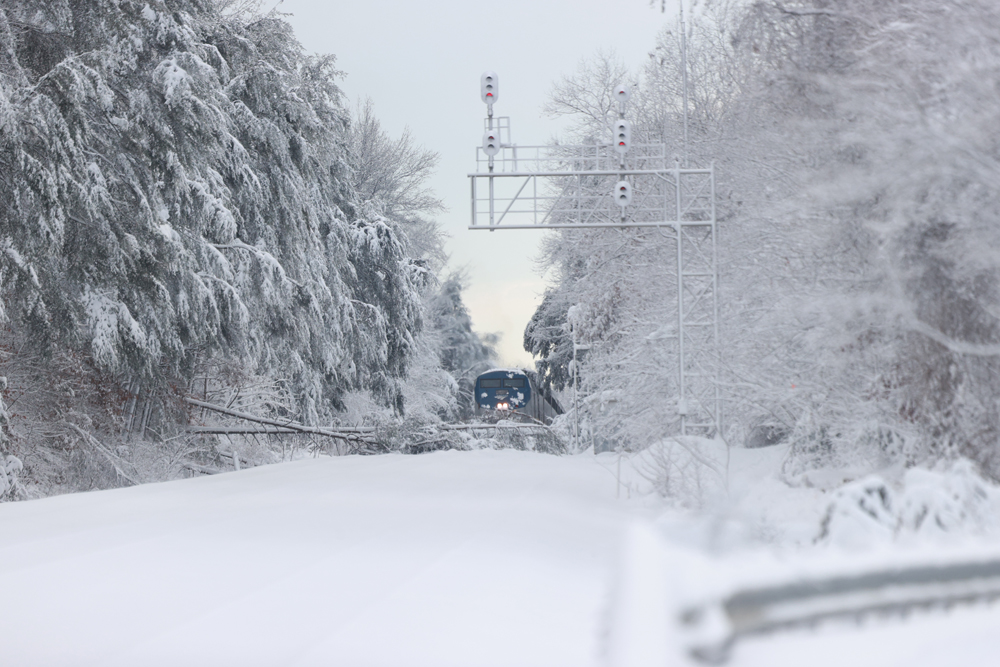
WASHINGTON — The well-publicized snowstorm that stranded motorists for 24 hours along Interstate 95 near Fredericksburg, Va., didn’t spare Amtrak trains operating through the region from cancellations and monumental delays. But the disruptions weren’t limited to the Northeast, as mudslides, cold temperatures, and snow caused route truncations and delays elsewhere.
In Virginia, trees laden with the heavy snow fell across both Amtrak and Virginia Railway Express commuter routes south of Washington.
On CSX Transportation’s Richmond-Washington, D.C., main line used by Northeast Regionals and long-distance trains bound for the Carolinas and Florida, Amtrak’s northbound Auto Train was stopped Monday morning by trees across the main line just south of its Lorton, Va., terminal. It was unable to move into the station for automobile unloading until after 8 p.m. That day’s southbound departure was cancelled, as was the northbound Auto Train from Sanford, Fla., on January 4.
Also on Monday, the New York-bound Carolinian terminated at Petersburg, Va., south of Richmond, and became the continuation of its southbound counterpart that had been halted at Washington, D.C. The makeup Carolinian rolled into Charlotte, N.C., 6 hours late, and only operated as far north as Raleigh, N.C., the next day.
Long-distance trains to Florida that never ran through the storm on Monday attempted to depart Tuesday, but the Silver Meteor didn’t leave Washington until 4:27 a.m. Wednesday, Jan. 5., instead of 7:30 p.m. Tuesday. With equipment still out of position, the northbound Silver Meteor, Silver Star, and Savannah, Ga.-to-New York Palmetto are cancelled for January 5.
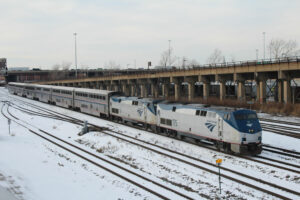
Trains on Norfolk Southern’s route through Charlottesville Va., also encountered fallen trees. Both northbound Northeast Regional No. 176 from Roanoke and the Crescent from New Orleans were stopped north of Lynchburg all day Monday while crews attempted to unclog the route. The Crescent finally backed into Lynchburg that evening after passengers were kept aboard all day, but it didn’t continue until Tuesday morning. The train had a previously planned cancellation set for January 4 [see “Amtrak faces some holiday cancellations,” Trains News Wire January 3], but is operating between New York and Atlanta Wednesday.
At Chicago, eight long-distance trains encountered departure delays of more than an hour January 3 and 4. The Southwest Chief, California Zephyr, and City of New Orleans all departed more than 2 hours late on Tuesday.
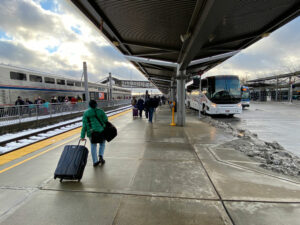
Most overnighters arriving Chicago from the west were on time both of those days. The Empire Builder, however, is not only dealing with low temperatures and snow over its entire route between Chicago and the Pacific Northwest, but mudslides between Everett, Wash., and Seattle have forced passengers onto buses between the two cities. The equipment turns at Everett, but the eastbound train departing Monday got a tardy start and was 13 hours late out of Fargo, N.D., on Wednesday. But Tuesday’s train departed Shelby, Mont., only a half-hour late the same day.






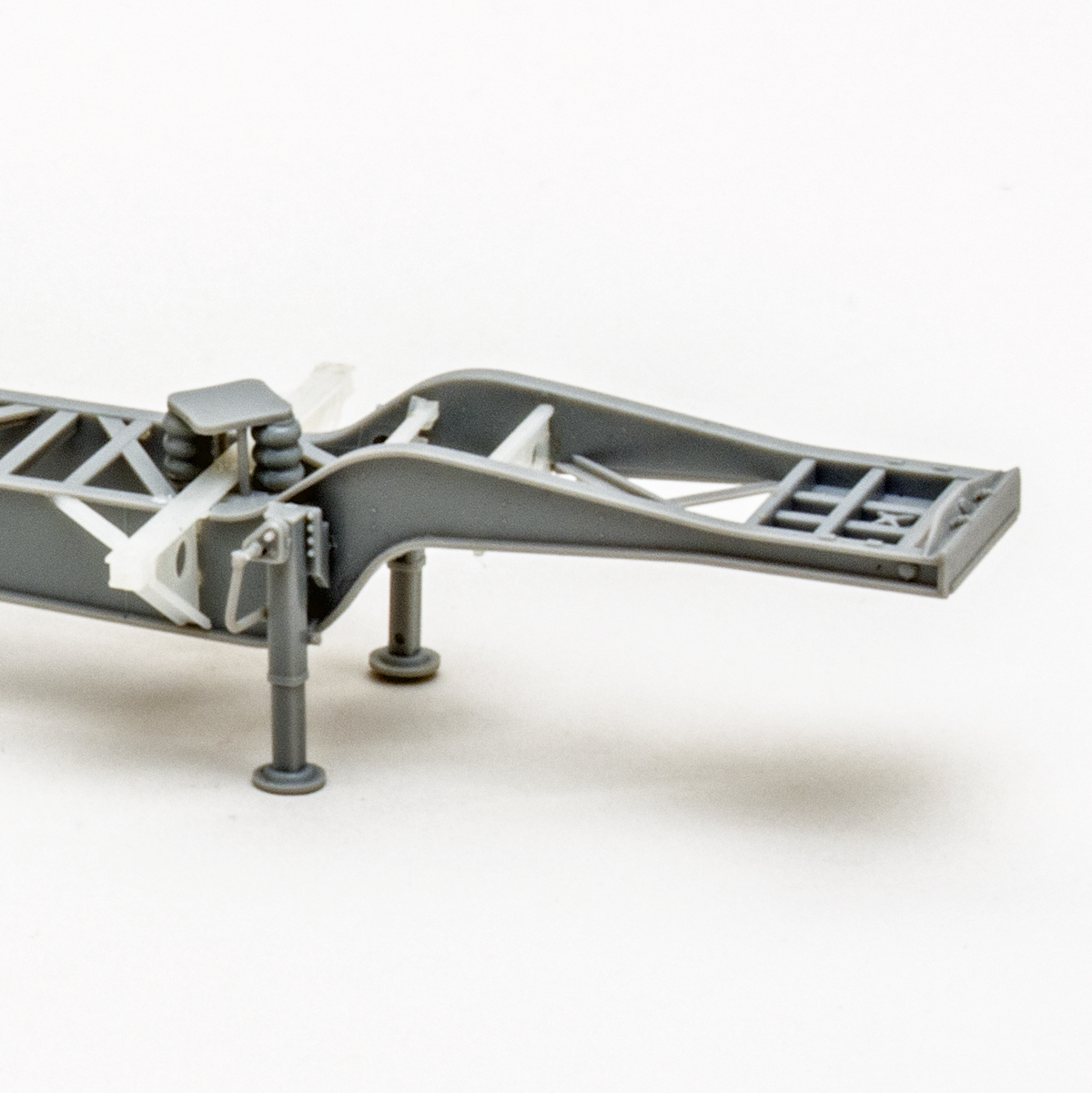
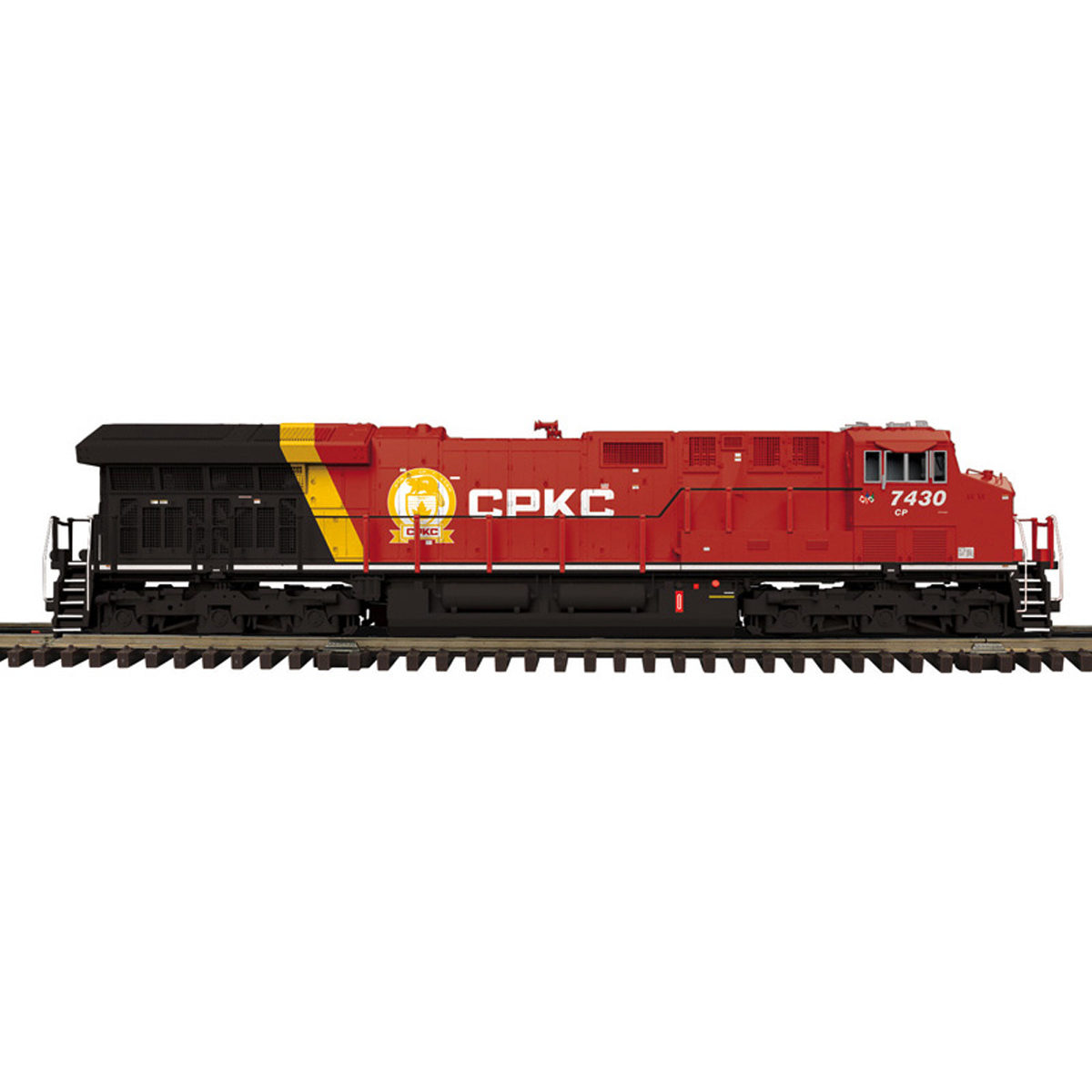
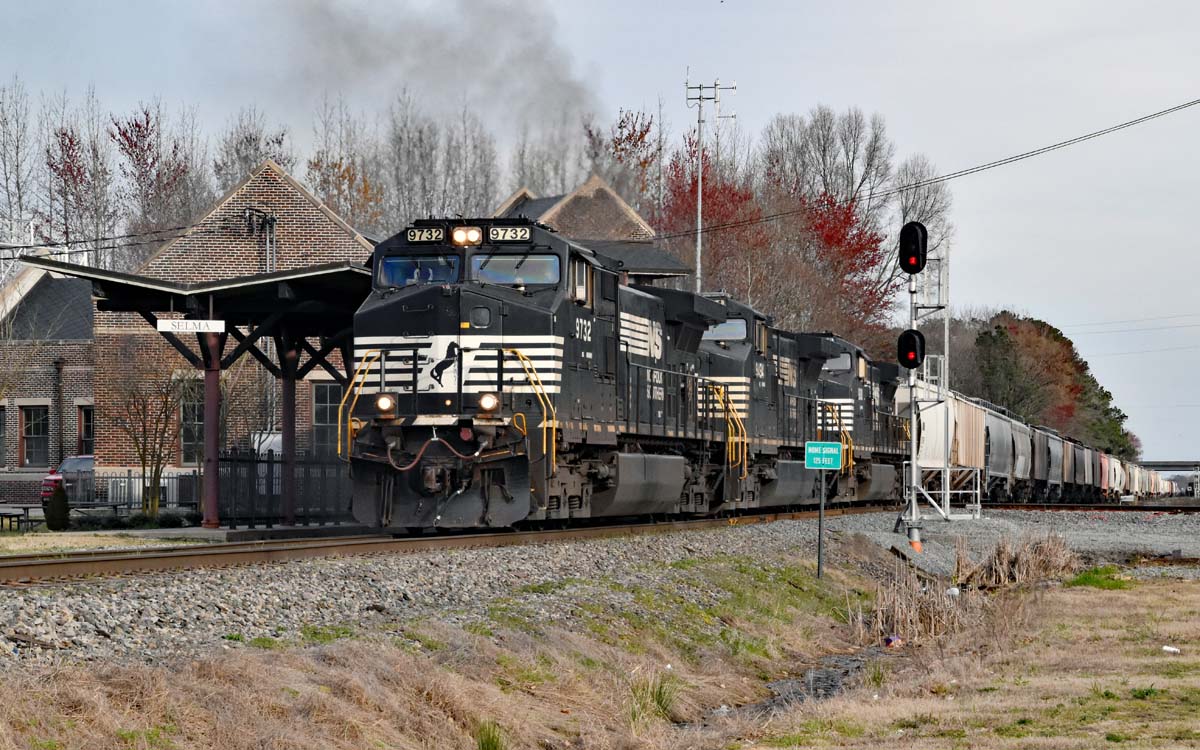
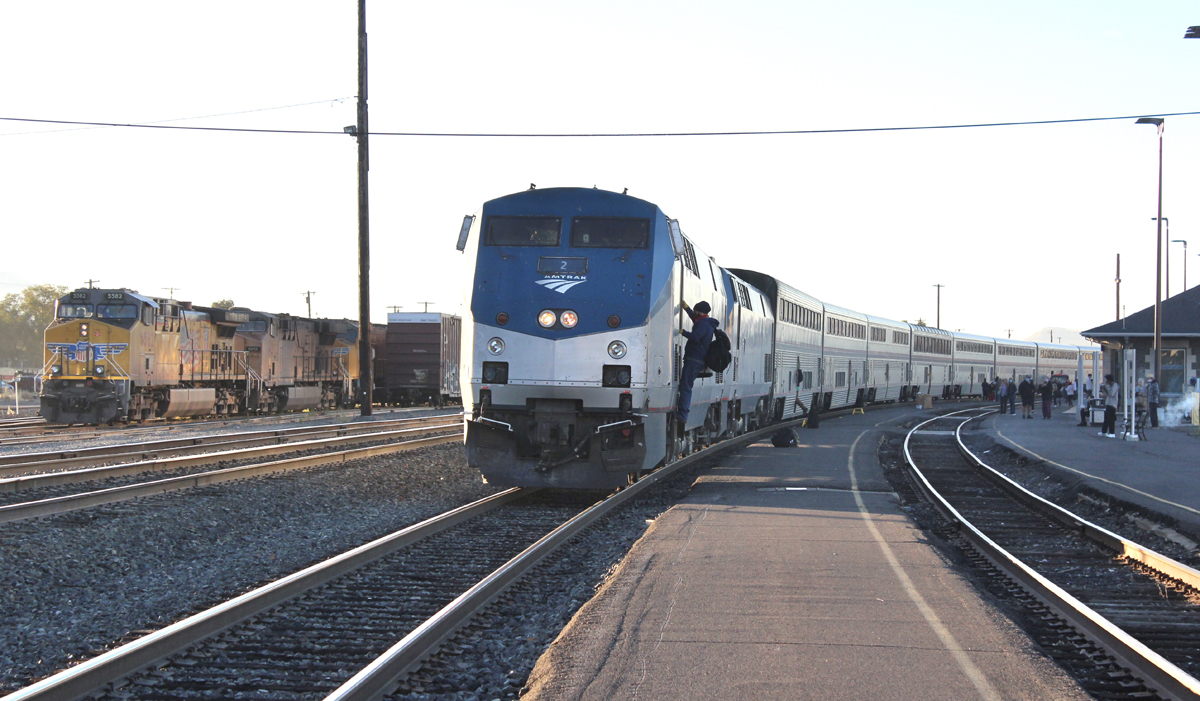




While the MoW forces were attempting to address weather issues, I submit that the MoW forces were not adequately staffed to deal with this situation and have not been for many years. When railroads ran precisely scheduled service, the departments were actively working to keep the trains on schedule. With the relaxed schedules used by the freight roads and the push to lower OR, a delay due to weather, breakdowns, or other issues are the norm and are tolerated as a way to reduce costs.
What neither Congress, which is composed of non-practicing attorneys, nor train buffs reminiscing about the “good ol’ days” they most likely just read about, whenever it was, fail to understand is why Amtrak falters and fails like clockwork during aberrant weather. The answer is simple and logical, which gives red meat to the business axiom how “The fish rots from the head.”
How can politicos and customers expect Amtrak not to self implode when its senior leadership is so deficient, no matter how much the PR shop attempts to dress-up the obvious? The corporate level of management avoided participation in the industry requisite of thorough training learned climbing the ladder in operations. The Board of Directors is understaffed; principal decision-makers are wired in Northeastern politicos who may please Sen. Schumer (D-NY), but lack the credentials requisite to provide oversight of management and to demand accountability.
If the Board comprised those appropriately identified per the Railpax legislation of 1970, the Board would have a full complement of members reflecting in-depth railroad operations; food & beverage services; labor relations; human resources. Corporate management would bring to the table competent, proven experience relevant to the railroad industry, well beyond the airlines and Capitol Hill office politics.
These basic tenets of good management and leadership that are missing, explains the unacceptable communication issues; lack of food and water/supplies impacting Amtrak trains en route. Indeed, if anybody is inquiring, to what extent did Amtrak’s leadership panic during the pandemic and terminate critical mechanical and food bases contribute to Amtrak’s paralysis and inability to anticipate, plan, and react timely during the weather issue this week?
Given the is repetitive compulsion of Amtrak leadership to fail is why Amtrak is referred to as being “kaput.”
Yes Charles Landey, the railroads did get stuck in the steam heat days. But they had people who knew what was required to keep them operable. Also, they had more personnel to handle the events. You may recall seeing pictures of the CZ observation car on a Leaning Tree Christmas card that shows steam coming out of the steam line. That was to keep a flow of steam to keep the line from freezing. And they had more sites for watering the equipment. On the other hand, toilets discharged on the track so no tanks to overflow. Hard to design retention tanks for extended use. The Superliners were designed originally to mascerate, chlorate and discharge waste when rolling (with a suspend when passing through drnking water source areas).
Also, when SP’s City of San Francisco was stalled in the Donner Pass, the highway was open and the weather cleared so the RR was able to get food to the train and I also think they had enough fuel and water on the E-units to keep the heat on. Not sure about car electricity as those were the days of axle driven generators on each car charging batteries which may have died.
There is simply no way to anticipate how every weather phenomenon will affect service, but Amtrak is getting huge amounts of negative publicity for their handling of some of these situations. What’s coming across in the press is that trainloads of passengers were without food and dealing with overflowing toilets. If railroad passenger service is going to truly be part of the transportation landscape it needs to offer both comfort and reliability. I get that falling trees will cause delays, but 12 hours for trees falling south of Lorton, VA – a densely populated area? Did nobody in CSX maintenance anticipate that heavy snow might bring down some trees and need some immediate response?
The maintenance of way employees who have to cut away tress from the ROW and trains are heroic and it’s no small task to cut away these huge trees.
My problem is with Amtrak. Passengers on the Crescent report no working restrooms. When I worked at the Amtrak stations in Whitefish and Shelby, we would call a pump truck to empty the toilets on the Superliner cars on the occasions they needed to be pumped. We’re any pump trucks available in Lynchburg?
Back in the day when a train was annulled, Amtrak would reach out to effected passengers and help them make other arrangements. Now Amtrak wants affected passengers to call the toll free number for help. That is an adventure in itself. Sit for over an hour and hope you get the call center in Philadelphia vs the one in Florida.
Amtrak can’t control the weather but they are things they can do to make ylthe best of a bad situation.
Mike Lustig
Thank you Trains for this article to help us understand what happened. I am afraid that those who like to complain have no idea what these employees are up against. This is not like pushing a button on your laptop or cellphone to fix a problem. This requires hard work in freezing an dangerous situations by real people. I know this because I have done this. Repairing storm damage is a very hard job.
Galen – quick correction, it was a Southern Pacific train (City of San Francisco) stuck in the Sierra Nevada’s in the 1950s. UP was still only an Omaha to LA and Pacific Northwest railroad back then.
I know for a fact passenger trains in “old days” had weather issues too especially the GN & NP & what about the UP train that was stuck in the Sierra Nev in the 50’s. We just hear about if more now because everybody is electronically connected to whine about their problems everybody thinks they’re so important they take these delays personally. As for the people stuck on that Interstate try checking the weather on that phone you have fused to your hand I’m sure they had weather advisories posted.
GALEN — We had the same problem, not as bad, on IH 39-90 in the Madison (Wisconsin) area about 12-13 years ago.
People whined, asking, Why wasn’t the Interstate closed before the snow? Didn’t Wisconsin State Patrol have access to weather forecasts?
Yes, the State Patrol had access to the exact same weather forecasts as everyone who drove their cars into a blizzard.
Remember steam lines? I wasn’t reading TRAINS MAGAZINE pre-Amtrak so I can’t say if the far north railroads managed to keep them running in the winter. If the problems only started with Amtrak, I really can’t say. On an anecdotal level, I never heard of frozen steam lines growing up in a somewhat cold, not brutally cold, climate (Massachusetts) in the 1960’s.
We had some bad winters in the 1970’s, about the time Amtrak’s patched-together mechanical crews were trying to keep steam lines working. I recall reading in TRAINS that Amtrak hauled frozen cars from Chicago to New Orleans to thaw them out. Some time in the 1970’s, I rode Amtrak Boston to Toledo with no heat, despite the efforts of mechanics trying to thaw the steam lines at stops en route.
I remember the train of frozen cars to New Orleans to thaw out. I think it was 1979, but not too sure about the year.
The pic of Auto Train and downed trees. That’s pine. Soft wood. Place a crew member into a good observation position and creep forward slowly clearing a path. No longer the all weather mode because we’ve become a risk averse nation.
Some smaller ones can get pushed out of the way, but when the tree is a mature one or if the root ball is still connected to the ground, they need to be cut with a chainsaw.
Whatever happened to the all weather travel mode?
Far be it for me to give excuses to Amtrak since Richard Anderson with his “wrecking ball” and “wrecking crew” of flyboys came aboard. But the “all-weather” you are referring to was back when the railroad and the passenger trains that ran over it were one.
You’re only saying that Mark because it’s true. Anderson’s gone but his destruction is alive and well with his fly boys in charge.
I’ve worked 24-hour days clearing downed trees off the tracks after snowstorms, ice storms, and tropical storms. Trust me, it ain’t fun.
Mother Nature can be fought but is hard to overcome.